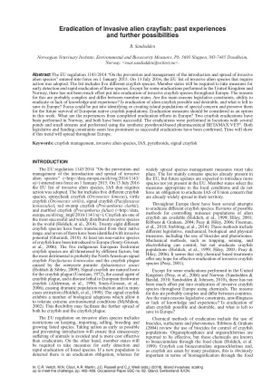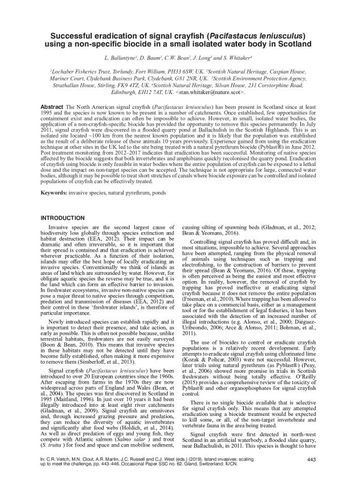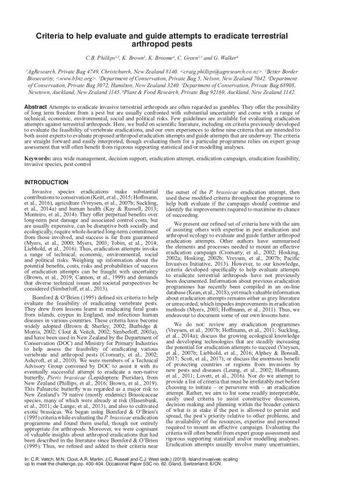Eradication of invasive alien crayfish: past experiences and further possibilities
- Description:
- The EU regulation 1143/2014 On the prevention and management of the introduction and spread of invasive alien species entered into force on 1 January 2015. On 13 July 2016, the EU list of invasive alien species that require action was adopted. The list includes ?ve di?erent cray?sh species. Member states will be required to take measures for early detection and rapid eradication of these species. Except for some eradications performed in the United Kingdom and Norway, there has not been much e?ort put into eradication of invasive cray?sh species throughout Europe. The reasons for this are probably complex and di?er between member states. Are the main reasons legislative constraints, ability to eradicate or lack of knowledge and experience? Is eradication of alien cray?sh possible and desirable, and what is left to save in Europe? Focus could be put into identifying or creating island populations of special concern and preserve them for the future survival of European native cray?sh populations. Eradication measures should be considered as an option in this work. What are the experiences from completed eradication e?orts in Europe? Two cray?sh eradications have been performed in Norway, and both have been successful. The eradications were performed in locations with several ponds and small streams and performed using the synthetic pyrethroid-based pharmaceutical BETAMAX VET®. Both legislative and funding constraints seem less prominent as successful eradications have been con?rmed. Time will show if this trend will spread throughout Europe.
- Display date:
- 2019
- Location:
- Pacific Region
- Collections:
- Secretariat of the Pacific Regional Environment Programme (SPREP)
- Publisher:
- International Union for Nature Conservation (IUCN)
- Content partner:
- Secretariat of the Pacific Regional Environment Programme (SPREP)
- Availability:
- Not specified
-
Copyright status: All rights reservedFind out more about what you are able to do with this itemThis item is all rights reserved, with means you'll have to get permission from Secretariat of the Pacific Regional Environment Programme (SPREP) before using it. For more information, please see our use and reuse page.What can I do with this item?Non-infringing useNZ copyright law does not prevent every use of a copyright work, and this item may be hosted by an international institute or organisation. You should consider what you can and cannot do with a copyright work.No sharingYou may not copy and/or share this item with others without further permission. This includes posting it on your blog, using it in a presentation, or any other public use.No modifyingYou are not allowed to adapt or remix this item into any other works.No commercial useYou may not use this item commercially.
Related items
Welcome and warm Pasifik greetings
The information on this site has been gathered from our content partners.
The names, terms, and labels that we present on the site may contain images or voices of deceased persons and may also reflect the bias, norms, and perspective of the period of time in which they were created. We accept that these may not be appropriate today.
If you have any concerns or questions about an item, please contact us.



